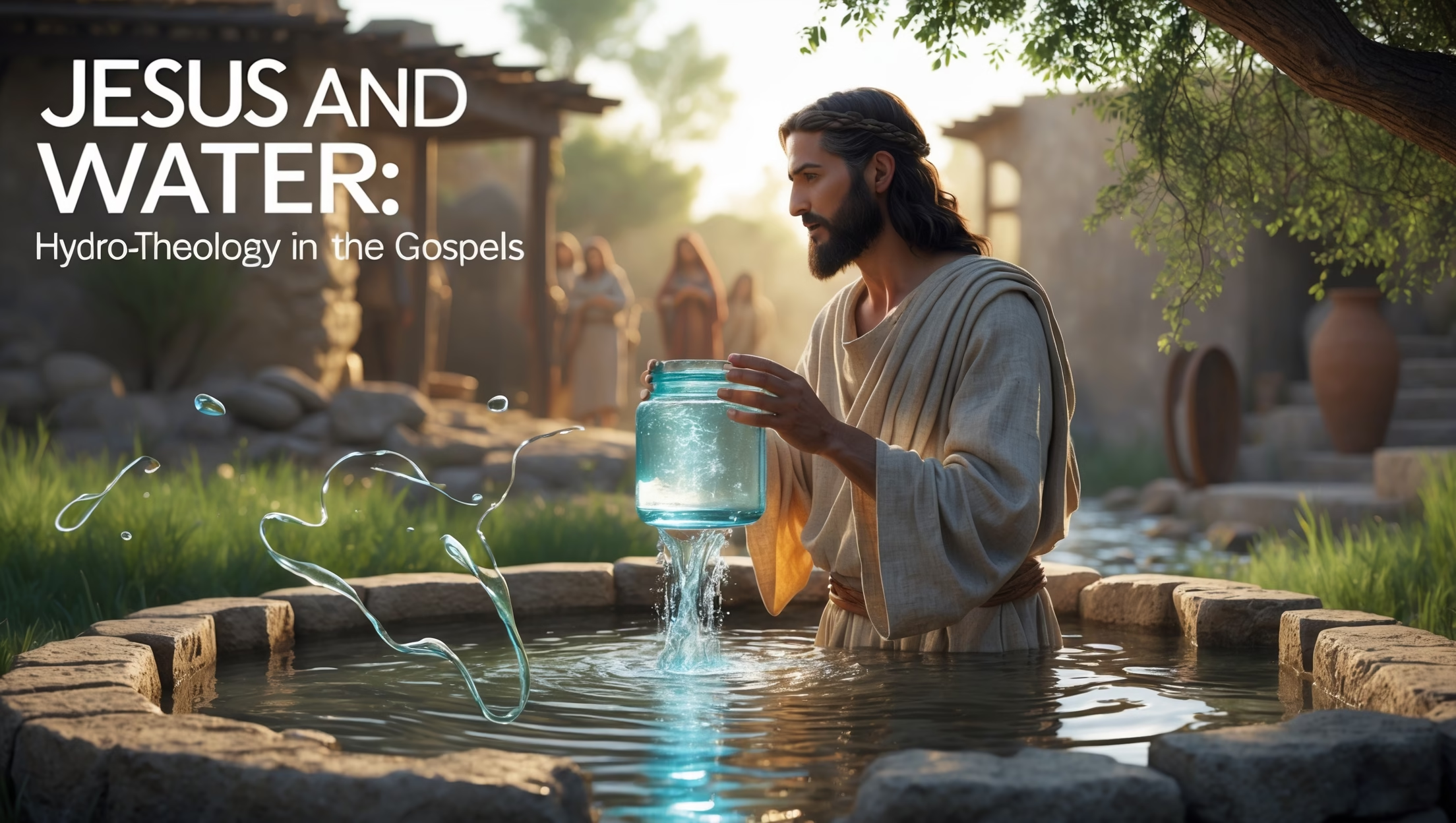Liquid Salvation Narratives
Water flows throughout the Gospels as both a literal and symbolic element. From baptism to miracles, Jesus’ interactions with water carry theological, cultural, and ecological significance. Understanding these encounters enriches our grasp of His ministry, revealing a Messiah deeply attuned to both the natural world and human experience.

Baptism in the Jordan River (Matthew 3:16)
One of the most foundational water narratives is Jesus’ baptism by John in the Jordan River. Modern hydrological studies show that the Jordan contained varying mineral concentrations—high in calcium, magnesium, and other trace elements—which would have made immersion physically invigorating.
Baptism here represents more than ritual cleansing. The act signals a divine affirmation: the heavens open, and the Spirit descends like a dove. Water becomes a theological language, conveying purification, initiation, and the beginning of Jesus’ public ministry.
- Physical Aspect: Full immersion in cool river waters would have been a sensory, almost shocking, experience.
- Symbolic Aspect: Water embodies rebirth, aligning with Hebrew Scriptures’ purification rites (Leviticus 14, Numbers 8).
Walking on Water (Matthew 14:25)
Another striking water miracle occurs when Jesus walks across the Sea of Galilee. Physicists have analyzed this event, noting that human weight would typically exceed water surface tension. While no natural explanation fully accounts for this, the narrative power lies in its symbolic resonance.
- Physics Perspective: Surface tension and wave mechanics provide insight into how extraordinary Jesus’ feat appears.
- Theological Implication: Water, often representing chaos and danger (Psalm 77:16-20), is subdued, demonstrating Jesus’ authority over creation.
This miracle also connects deeply with disciples’ experiences. Amid storms, fear, and doubt, water becomes a medium of trust and divine presence.
Living Water vs. Ritual Washings
Beyond miracles, water in the Gospels conveys enduring spiritual truths. Jesus contrasts routine ritual washings with the “living water” He offers (John 4:10).
- Wells as Female Spaces: In His encounter with the Samaritan woman, the well serves as a meeting place, emphasizing social, gender, and spiritual dimensions. Water here symbolizes life, inclusivity, and the breaking of cultural barriers.
- Ritual Significance: Jewish purification laws used water for physical and spiritual cleansing; Jesus reframes these practices, highlighting inner renewal over external observance.
Living water becomes a metaphor for the Spirit, flowing continuously and offering transformation beyond mere physical washing.
Contemporary Water Issues in Theology
Jesus’ hydro-theology resonates today, particularly in discussions of water rights and ecological stewardship.
- Holy Land Water Conflicts: Access to rivers and wells remains politically charged, reflecting the ongoing relevance of water as both life-sustaining and contested.
- Baptismal Ecology Movements: Some Christian communities integrate environmental awareness into baptismal practices, emphasizing clean water, conservation, and sustainability.
These modern movements show that water is not only a historical or symbolic element but also a practical concern for faith communities striving to honor creation responsibly.
The Symbolism of Water in Ministry
Jesus’ interactions with water reveal layered meanings:
- Authority Over Nature: Walking on the Sea of Galilee illustrates divine mastery over creation.
- Spiritual Nourishment: Living water offers eternal sustenance and life.
- Social Engagement: Wells and rivers provide settings for teaching, outreach, and breaking social barriers.
- Ritual and Community: Baptism unites believers in shared initiation, linking physical water with spiritual rebirth.
Water, therefore, operates as a medium connecting human, divine, and ecological realms, reinforcing the holistic character of Jesus’ ministry.
Modern Applications: Faith and Water Today
Christian ministries increasingly recognize the multifaceted importance of water:
- Pilgrimages: Sites like the Jordan River attract thousands seeking physical and spiritual encounters with sacred water.
- Environmental Stewardship: Faith-based organizations advocate for clean water access, reflecting Jesus’ concern for life and justice.
- Liturgical Innovation: Churches experiment with baptismal fonts, immersion pools, and symbolic water practices to reinforce spiritual teaching.
By connecting historical, scientific, and theological insights, these practices ensure that the hydro-theology of Jesus remains tangible and relevant for contemporary faith communities.
Key Insight: Water as Medium of Divine Encounter
From baptism to miracles, wells to stormy seas, water in the Gospels conveys authority, life, and transformation. Jesus’ ministry demonstrates that liquid, often overlooked in spiritual reflection, carries profound theological weight. By paying attention to hydro-theology, believers gain a richer appreciation of Christ’s engagement with creation, human experience, and divine purpose.
Water is not only a historical or ecological phenomenon; it is a theological symbol, a tool of teaching, and a sign of God’s sustaining presence. Through these liquid narratives, the Messiah invites us to experience life, trust, and transformation flowing through every aspect of creation.









